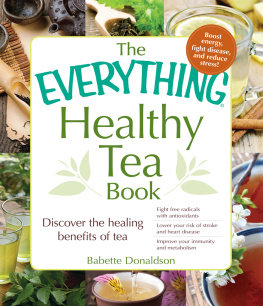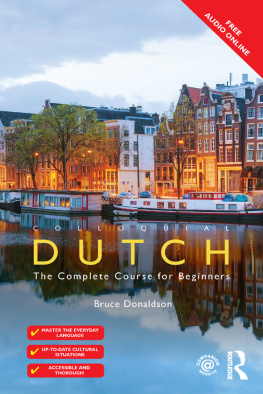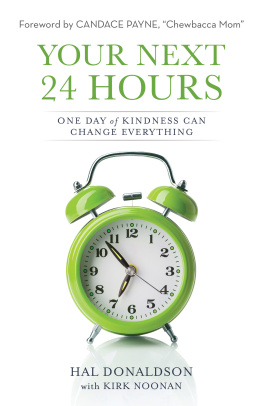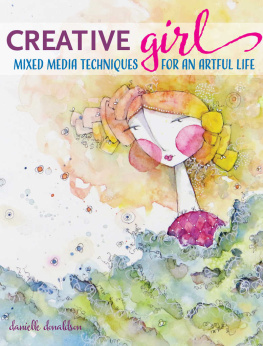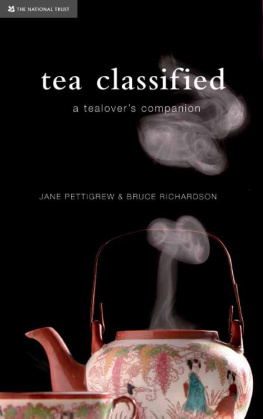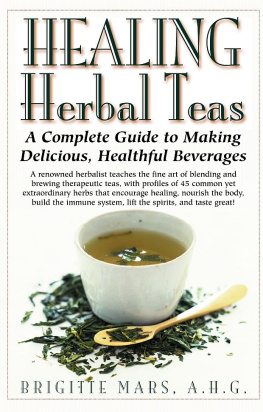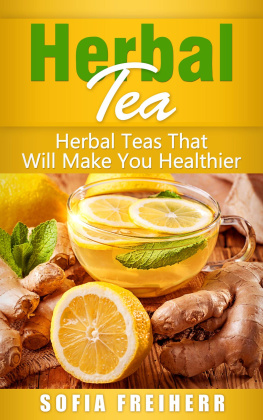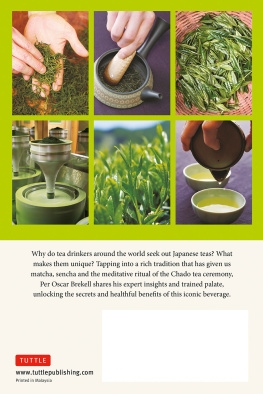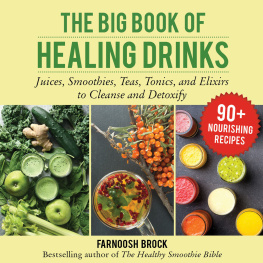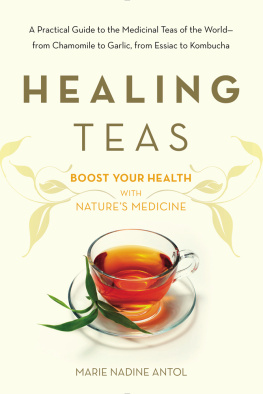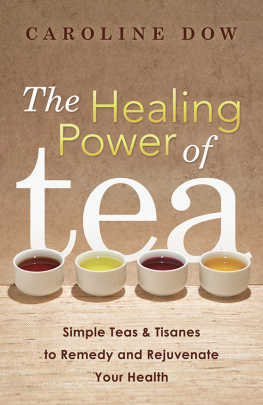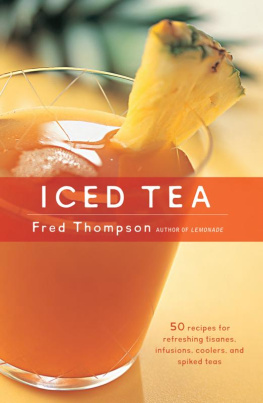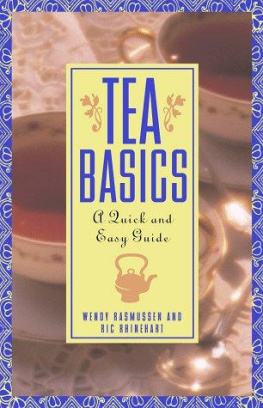THE

HEALTHY TEA
BOOK
Discover the healing benefits of tea
Babette Donaldson

Avon, Massachusetts
Dedicated to my tea mentors: Donna Fellman, Roy Fong, Richard Guzauskas, Ip Wingchi, Radjiv Lochan, Nigel Milican, Philip Parda, James Norwood Pratt, and Dan Robertson.
Contents
Top 10 Tea Myths
- Tea doesnt go bad. (In reality, the compounds that produce flavor and health benefits degrade with time and exposure to light, moisture, and air.)
- Green, black, oolong, puerh, and white teas all come from different plants. (All true teas come from varietals of the Camellia sinensis plant. Processing creates the differences between the categories.)
- Green tea is healthier than black tea. (More research has been done on green tea than black tea, making it seem healthier.)
- All tea has equal health benefits, so buy the least expensive. (The healthiest tea is the freshest and least degraded by poor packaging or inadequate storage.)
- Drinking tea can help you lose weight. (Drinking tea can increase metabolism and energy to encourage more activity, and can also replace high calorie beverages.)
- Black tea has the most caffeine and white tea the least. (It is nearly impossible to predict the amount of caffeine in brewed tea. White tea with a high percentage of whole buds may contain more caffeine than black tea.)
- Decaffeinated tea is completely free of caffeine. (It is impossible to remove all caffeine from tea. There will always be a trace amount, usually less than 5 percent.)
- Tea bags are filled with dust swept from the factory floor. (Tea dust is a byproduct of tea production, where the leaves that have broken or been ground into a dust-like powder are used to fill tea bags for quick infusion.)
- Green tea is bitter. (Green tea has more astringency than other teas and can be bitter if it is brewed improperly. If brewed correctly, it can be very sweet.)
- Tea causes dehydration. (An astringent green tea can sometimes leave a feeling of dryness in the mouth, but this has been shown to cause only slightly more fluid loss than water.)
Introduction
THERE ARE MANY HERBS, in addition to Camellia sinensis, the true tea, which brew healthy and flavorful hot beverages. There are also many fruits and vegetables with high antioxidants values that contribute to a healthy diet. But no other food product casts as wide an umbrella over your potential for good health as does tea. Distinguishing it even more are the cultural and spiritual values it contributes to peoples lives. The potential for wellness is not limited to our physical bodies. Tea also nurtures the spirit with beauty through tradition and ceremony.
Our thirst for tea is never far from our craving for beauty. James Norwood Pratt, author of The Ultimate Tea Lovers Treasury (2011).
Five thousand years ago, the legendary Chinese Emperor, Shen Nong, is said to have accidentally brewed the first cup of tea when a leaf fell into his boiling water. The story goes on to say that he recognized some of the beneficial properties of Camellia sinensis, and included it in his compendium of healthy plants. Many different practices using tea as a tonic became part of traditional folk medicine. Modern science is gradually accumulating a body of evidence through which they can finally confirm what ancient healers discovered by observation and experience.
Two thousand years after Shen Nongs discovery, the Greek physician Hippocrates, the father of western medicine, said, Let food be your medicine and medicine be your food. Our modern diets are a long way from following Hippocrates advice. Food is often our entertainment, and cooking is sometimes a hobby with less concern for the number of calories or the nutritional value. The desire for convenience can inspire unhealthy habits and aggressive marketing plays into that vulnerability to the point that some eating habits can become dangerous. But, for all of its 5,000-year history, Camellia sinensis has continued to be valued as both healer and beverage; a cultural icon and a spiritual companion. All of this contributes to making it the second most consumed beverage in the worldsecond only to water.
This book blends teas folklore and science to demonstrate how it can fit into every lifestyle. It focuses more on loose-leaf tea rather than bagged tea for three reasons. First, loose-leaf tea can seem complex and intimidating to someone completely new to tea. Secondly, there are circumstances in which it may offer greater health benefits. Lastly, many of the nonscientific health benefits are the ways tea inspires a healthier lifestyle, and the artisan teas may have more to contribute in this respect. Hopefully, understanding how tea plants are grown and processed will help make selection and brewing feel like an exciting adventure; more enjoyable and more meaningful.
Tea began as a medicine and grew into a beverage. Kakuzo Okakura, author of The Book of Tea (1906).
Ironically, the greatest percentage of tea drinkers do not base their daily teatime on the health benefits. It is far more likely, even if they are first attracted by the medias coverage of new research on weight loss or cardiovascular health, that they quickly become drawn into the experience.
But, art and culture aside, Camellia sinensis, the true tea plant, continues to be one of the most researched botanicals in the health sciences, and the results are promising. There are those who believe that, with more research, the antioxidant EGCG in green tea will one day provide a cure for some cancers. And, in the months between final editing and printing this book, many new studies will be published, hopefully bringing us even closer to that dream.
So, as Kenneth Graeme, author of The Wind in the Willows, said, Come along inside... Well see if tea and buns can make the world a better place.
Chapter 1
What Is Tea?
Thousands of years before the beginning of what is now referred to as C.E. (the Common Era), humans gathered plants for food and medicine. In China and possibly India, the tea plant, Camellia sinensis, was one of those green, leafy medicinal options. Anyone chewing on a leaf would probably have grimaced at the bitter taste but might have then noticed a sudden rush of energy and a feeling of invigoration. One can imagine that, once this ancient human shared his discovery with family and friends, they would have tested it on various ailments.
A 5,000-Year-Old Medicine
The true tea, Camellia sinensis, is one of the few plants with a long history as a medicinal. There are also several colorful legends about the first ancient brewed tea. The oldest and most often told is the legend of Chinas Divine Healer, Emperor Shen Nong, who lived 5,000 years ago and is credited with discovering hundreds of healing herbs, then sharing his prescriptions with his subjects. (For Shen Nongs story, see Chapter 2.)

Tea began as a medicine and grew into a beverage are the first words of

